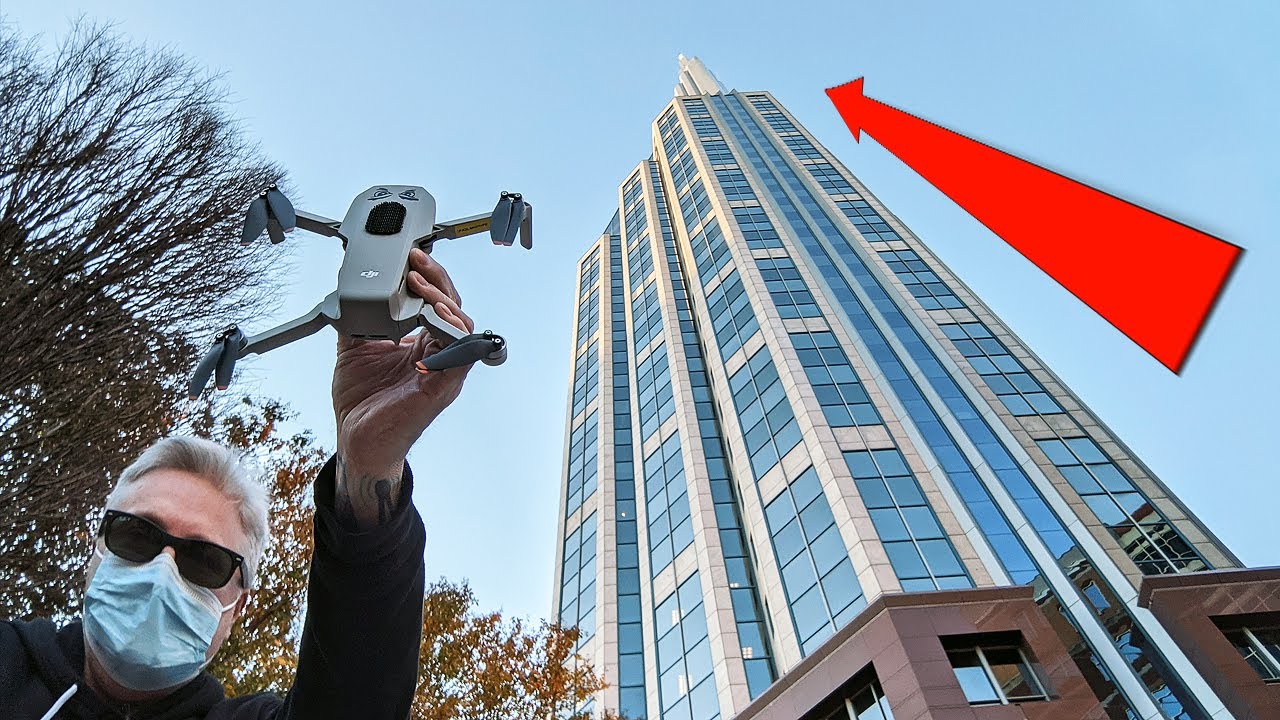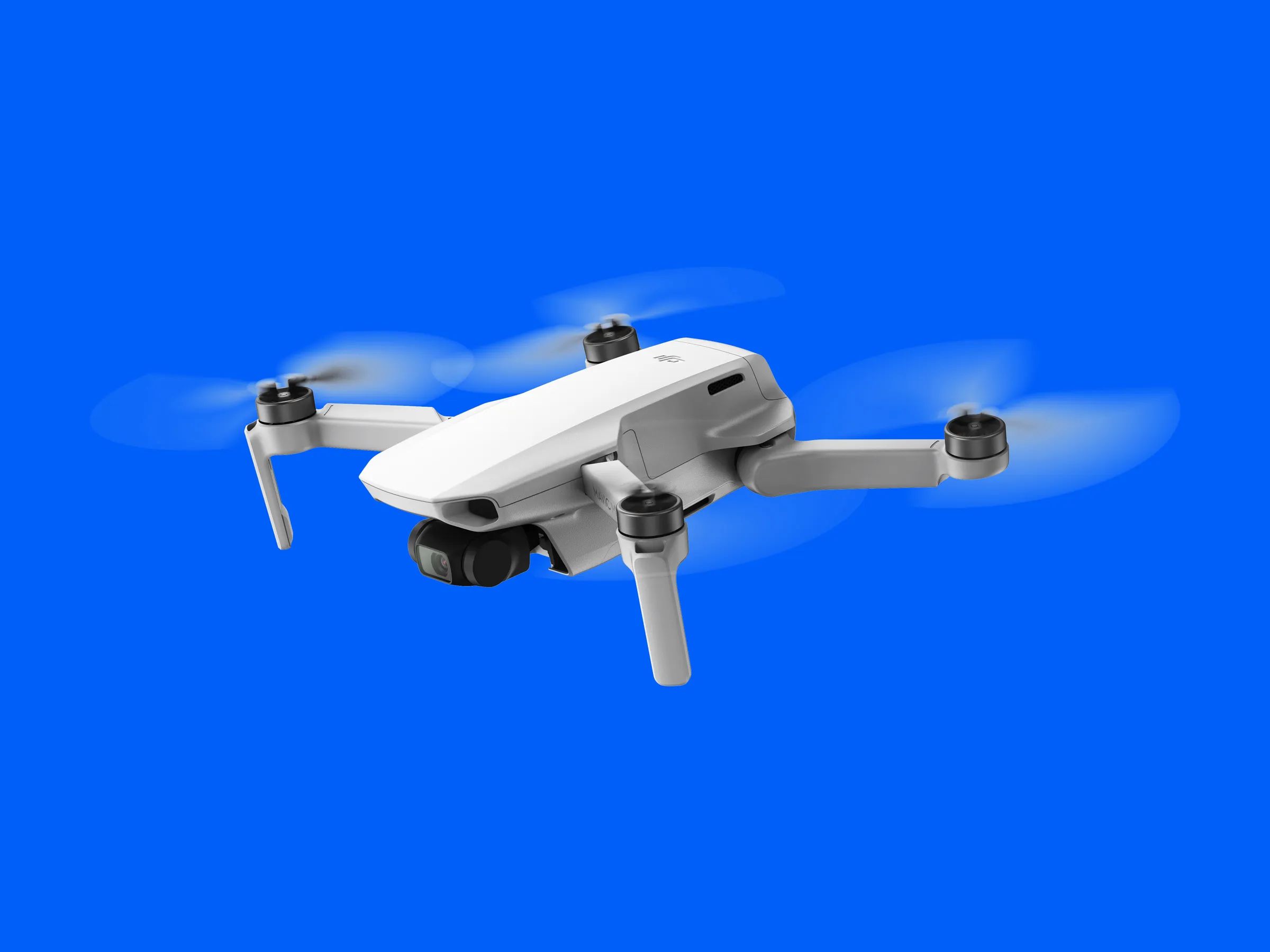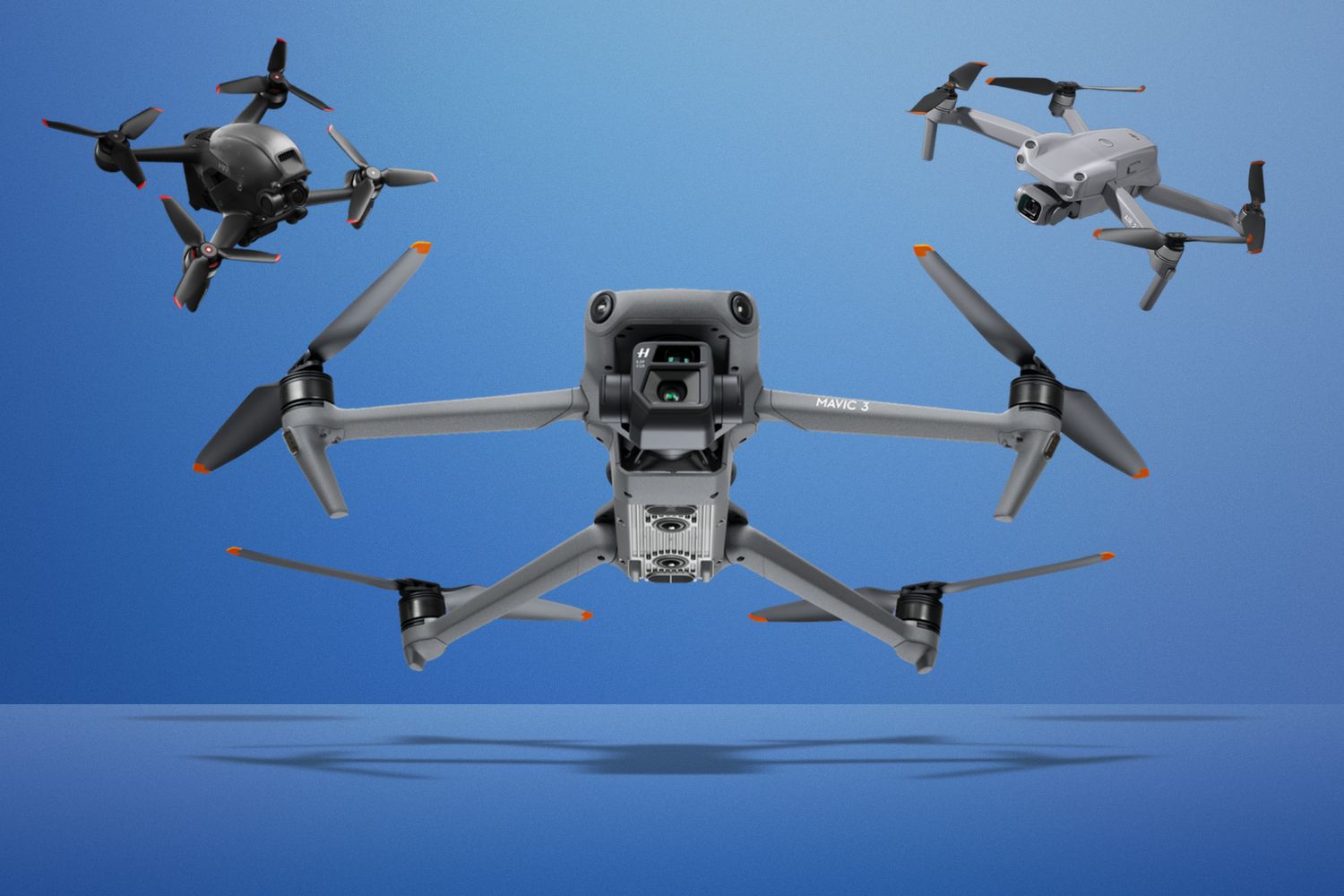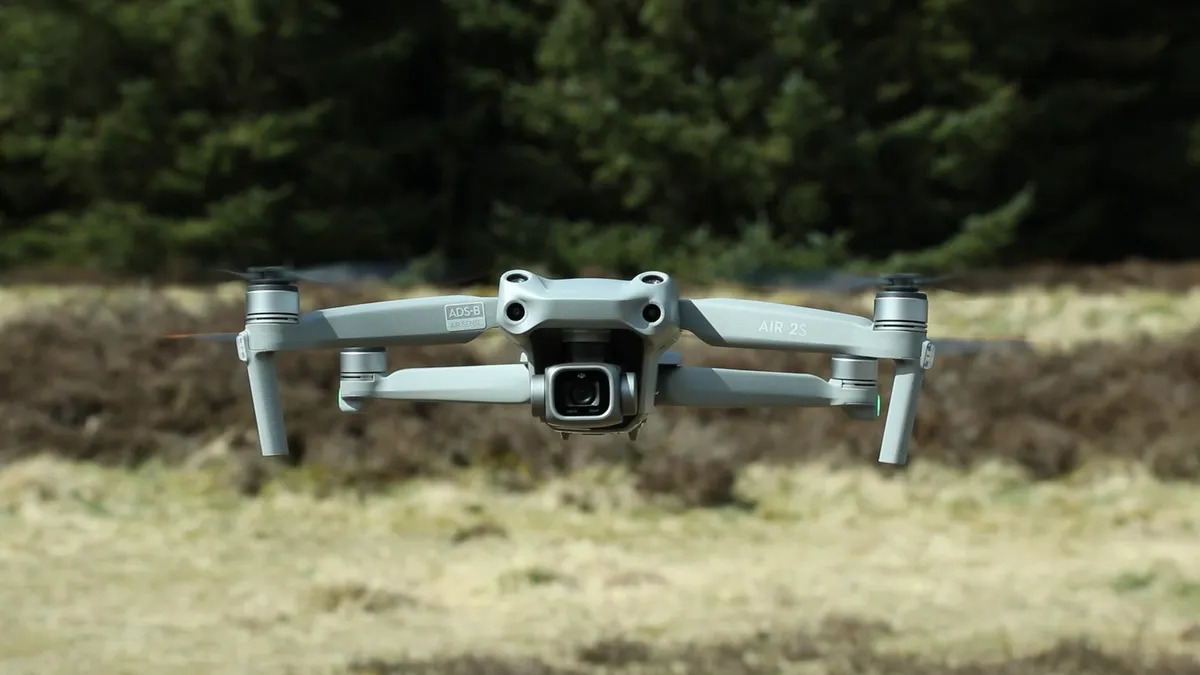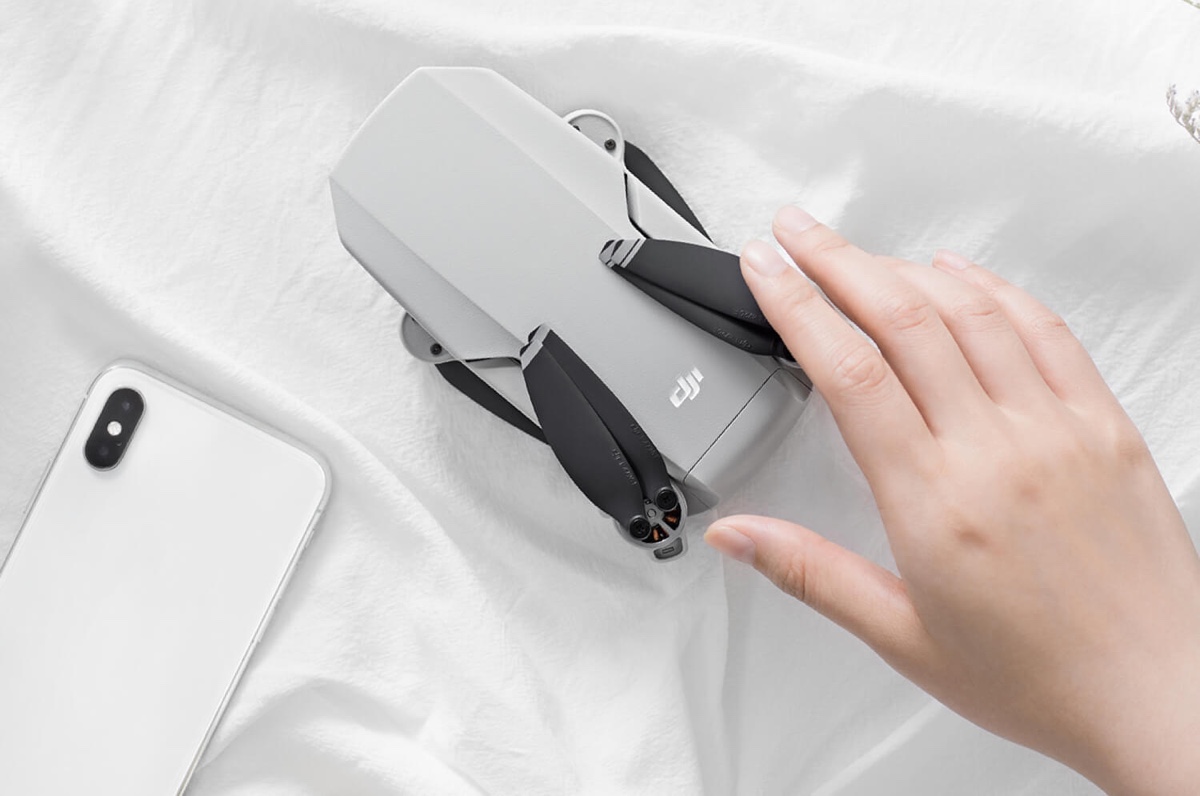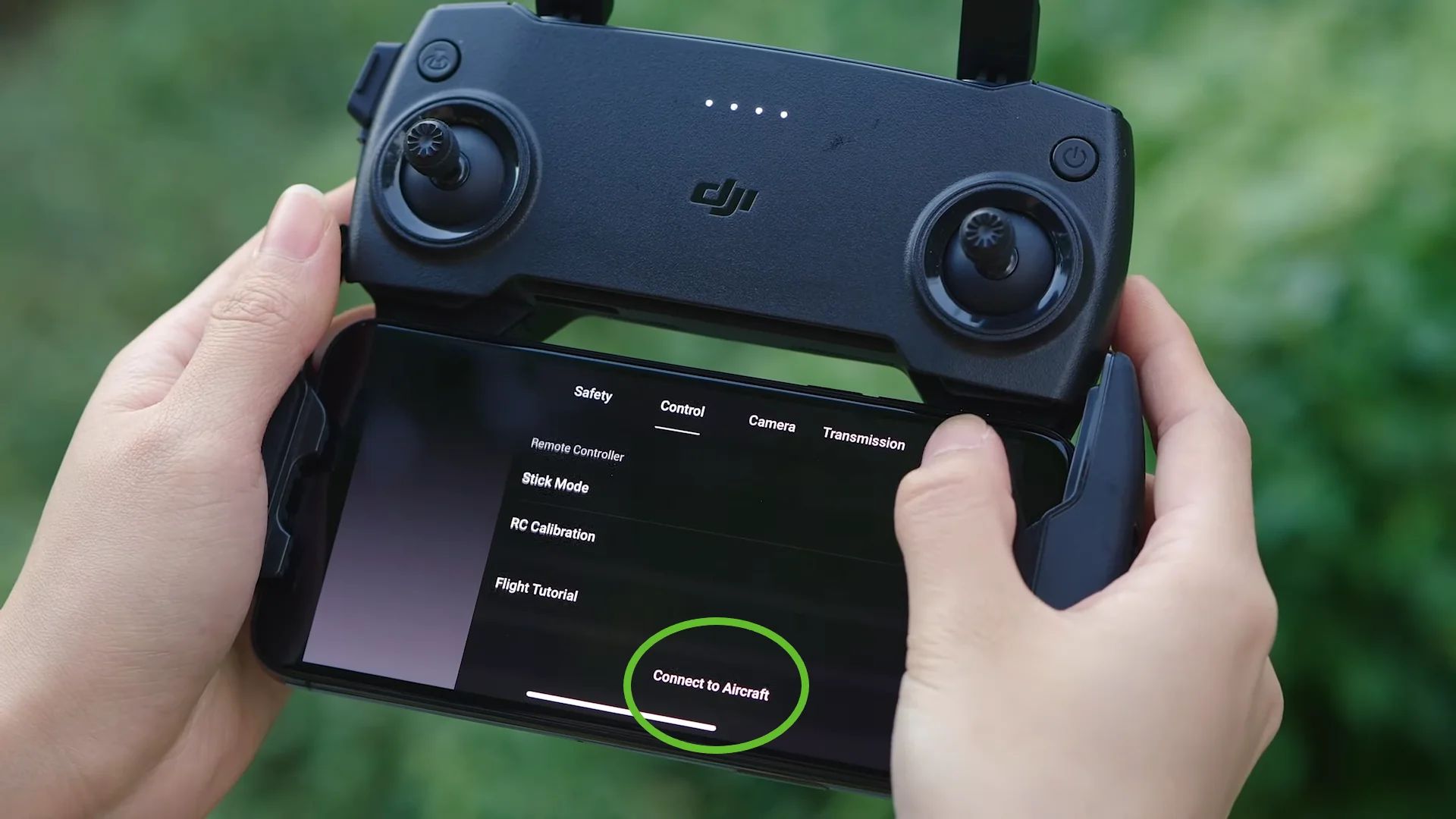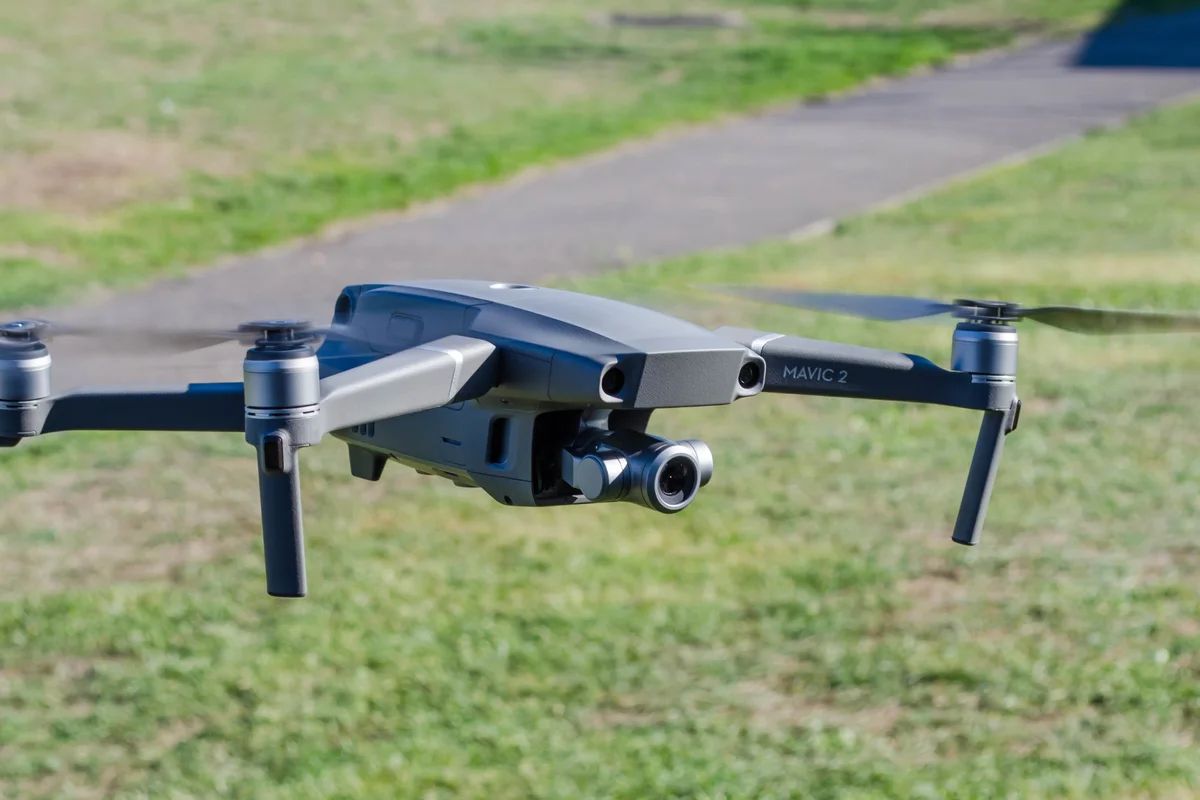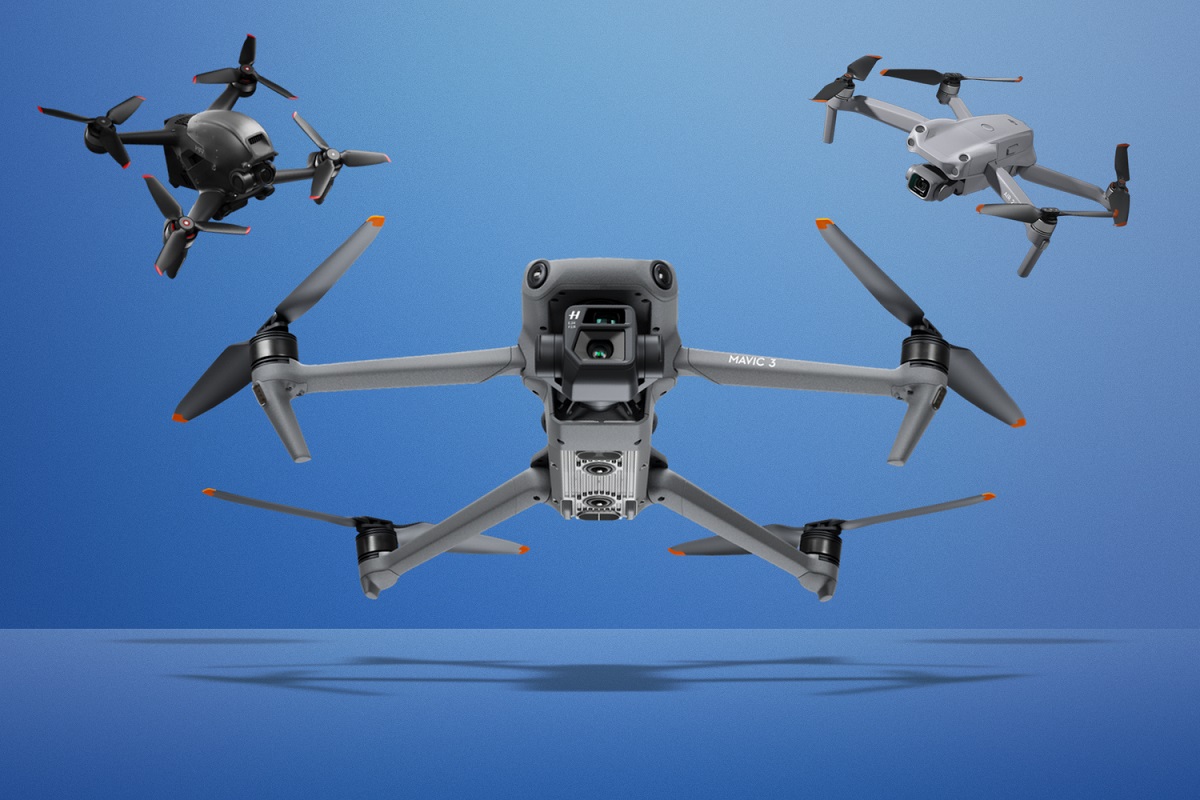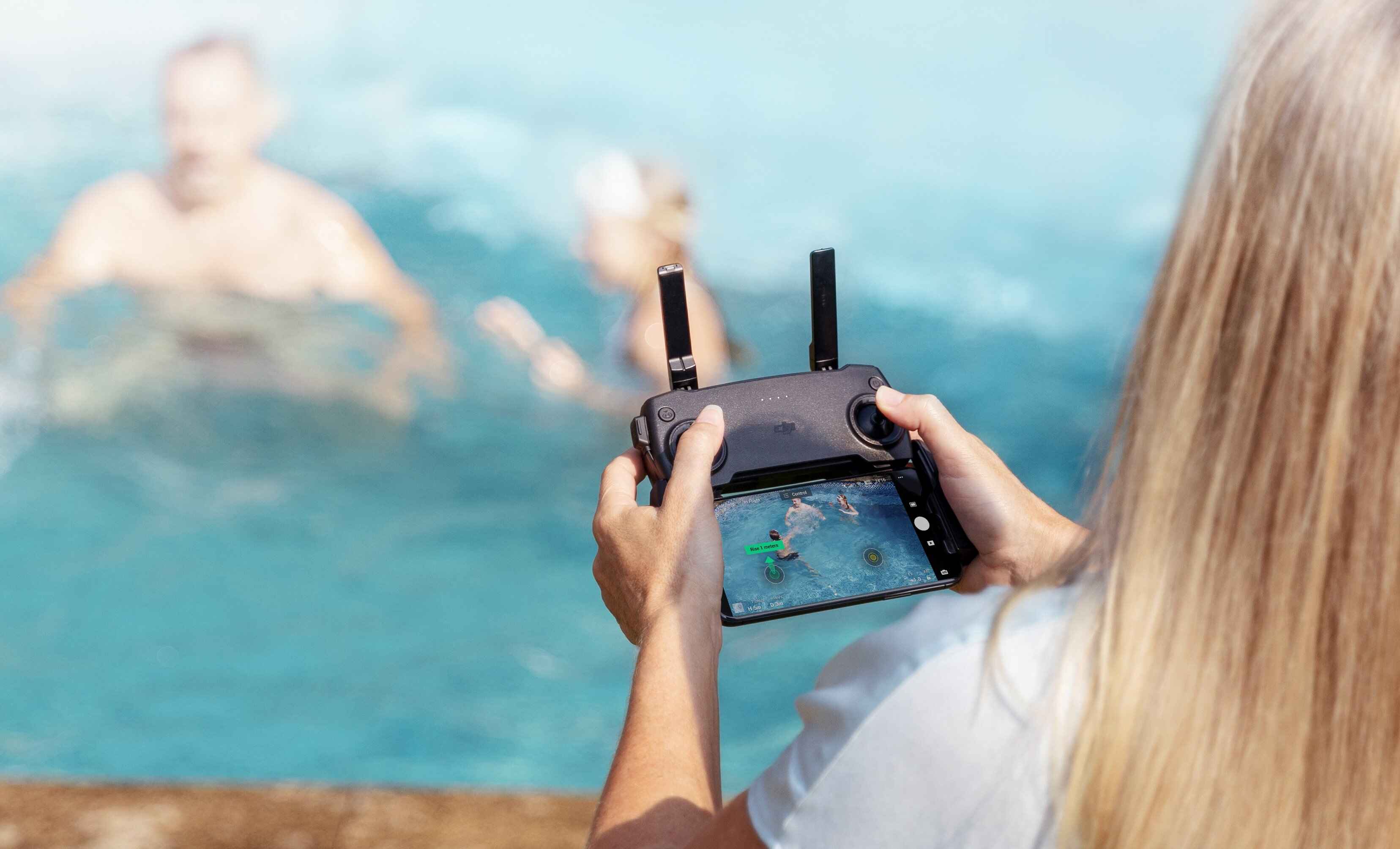Introduction
The DJI Mavic Mini is a popular and lightweight drone that has gained popularity for its compact size and impressive flight capabilities. It is marketed as the perfect drone for beginners and hobbyists due to its easy-to-use features and affordability. One of the key factors that users consider when purchasing a drone is its maximum flight altitude. Understanding the capabilities of the DJI Mavic Mini in terms of how high it can fly is essential for planning aerial photography or videography sessions, as well as complying with regulations set by aviation authorities.
In this article, we will explore the various factors that affect the maximum flight altitude of the DJI Mavic Mini, including weight and size limitations, regulatory restrictions, battery life, wind speed limitations, range limitations, and flight modes. By understanding these factors, you can make informed decisions while operating the DJI Mavic Mini and ensure a safe and enjoyable flying experience.
It’s important to note that the information provided in this article is based on the manufacturer’s specifications and general guidelines. However, it’s always a good idea to check your local aviation rules and regulations, as well as any restrictions specific to your location, before flying the DJI Mavic Mini.
Weight and Size Limitations
The weight and size of a drone play a crucial role in determining its maximum flight altitude. The DJI Mavic Mini is known for its lightweight design, weighing in at just 249 grams. This is significant because many countries have regulations that require drones over a certain weight to be registered and comply with additional regulations, such as obtaining a license or permit.
Being under the 250-gram weight limit allows the DJI Mavic Mini to be classified as a “micro” or “nano” drone in many jurisdictions. This classification often provides more flexibility and fewer restrictions in terms of where you can fly your drone, including potentially higher maximum flight altitudes.
In terms of size, the DJI Mavic Mini has compact dimensions, making it highly portable and easy to transport. Its small size enables it to maneuver through tight spaces and fly in areas where larger drones might be restricted. However, it’s important to note that the small size of the DJI Mavic Mini does have some limitations, particularly when it comes to its wind resistance capabilities.
Overall, the lightweight and compact design of the DJI Mavic Mini contributes to its ability to achieve impressive maximum flight altitudes. However, it’s essential to always adhere to the weight and size limitations outlined by aviation authorities in your area to ensure safe and legal operation of the drone.
Maximum Flight Altitude
The maximum flight altitude of the DJI Mavic Mini is an important consideration for drone enthusiasts. It determines how high the drone can ascend in the sky and capture breathtaking aerial footage. The DJI Mavic Mini has an impressive maximum flight altitude of 120 meters (or 400 feet) above ground level.
This altitude limit is set by default in order to comply with aviation regulations in many countries, as well as to ensure the safety of flights. However, it’s worth noting that the maximum altitude can be adjusted in the drone’s settings to a maximum of 500 meters (or 1640 feet) in some regions.
It’s important to keep in mind that flying at higher altitudes can have certain limitations, such as reduced control range and increased susceptibility to wind. Therefore, it’s advisable to exercise caution and carefully monitor the drone’s behavior when flying near or at the maximum altitude.
Additionally, it’s worth mentioning that some countries or specific flight zones may have further restrictions on maximum flight altitudes, especially around airports, military installations, and other sensitive areas. It is crucial to familiarize yourself with the aviation regulations and airspace restrictions in your location to ensure compliance and avoid any potential legal issues.
Overall, the DJI Mavic Mini offers a respectable maximum flight altitude that allows users to capture stunning aerial shots and explore the world from a new perspective. However, it’s vital to fly responsibly, within legal limits, and always prioritize safety while operating the drone.
Regulatory Restrictions
When it comes to flying a drone, there are various regulations and restrictions in place to ensure safety and privacy. It’s crucial to understand and comply with these regulations to avoid any legal complications and potential harm to others. The DJI Mavic Mini, despite its smaller size, is subject to the same regulatory restrictions as larger drones.
One of the primary regulatory restrictions is the requirement to register your drone with the appropriate aviation authority in your country. This registration process helps authorities keep track of drones in the airspace and ensures responsible drone operation. Some countries also require you to obtain a drone pilot’s license or permit, depending on the purpose of your flights or certain flight scenarios.
In addition to registration and licensing requirements, there are restrictions on where you can fly the DJI Mavic Mini. These restrictions often include no-fly zones such as airports, military bases, and other sensitive areas. It’s important to research and familiarize yourself with the specific no-fly zones and restricted airspace in your location.
Furthermore, many countries have implemented strict privacy laws that govern the use of drones for capturing images or recording videos. These laws may require consent from individuals or specific permissions for commercial use, such as for photography or videography purposes. It’s essential to respect the privacy of others and adhere to privacy laws while operating the DJI Mavic Mini.
Lastly, it’s worth noting that regulations and restrictions regarding drones can vary from country to country, and even within different regions of the same country. It is crucial to stay up-to-date with the latest regulations in your area and be aware of any temporary or special flight restrictions that may be imposed due to certain events or circumstances.
By understanding and complying with the regulatory restrictions, you can ensure safe and responsible drone operation with the DJI Mavic Mini, avoiding any legal consequences and fostering a positive image for drone enthusiasts as a whole.
Maximum Wind Speed
Wind conditions play a significant role in determining the safe and smooth operation of a drone. The DJI Mavic Mini has certain limitations when it comes to flying in windy conditions. It is designed to handle wind speeds up to a maximum of 29-38 km/h (or 18-24 mph).
It’s important to note that flying in high winds can affect the stability and control of the drone, potentially leading to unstable flight, reduced battery life, and even crashes. Therefore, it is advisable to avoid flying the DJI Mavic Mini in windy conditions or strong gusts that exceed its maximum wind speed capabilities.
In order to ensure safe flight, the DJI Fly app, which is used to control the DJI Mavic Mini, provides real-time information on wind speed conditions. This feature allows pilots to make informed decisions about whether it is suitable to fly and at what altitude.
It’s also worth mentioning that flying in windy conditions can impact the battery life and overall flight time of the drone. High winds require the drone to exert more power and consume more energy to maintain stability, resulting in a shorter flight time compared to calm weather conditions.
Overall, while the DJI Mavic Mini can handle moderate wind speeds, it’s important to exercise caution and avoid flying in windy conditions that surpass its maximum wind speed capabilities. By being mindful of the wind conditions and staying within the recommended limits, you can ensure a safer and more enjoyable flight experience with the DJI Mavic Mini.
Battery Life and Flight Time
Battery life and flight time are crucial factors to consider when operating a drone, and the DJI Mavic Mini aims to strike a balance between performance and flight duration. The drone is equipped with a 2,400mAh intelligent flight battery that provides an average flight time of up to 30 minutes on a full charge.
It’s important to note that flight time can vary depending on several factors, including weather conditions, flying style, payload, and flight mode. In practice, it’s advisable to anticipate a slightly shorter flight time of around 25-28 minutes, allowing for a comfortable margin to return the drone safely to home before the battery is depleted.
Recharge time is another important consideration. The DJI Mavic Mini’s battery takes approximately 90-120 minutes to recharge fully using the provided charger. It’s recommended to have spare batteries on hand to extend the overall flight time and minimize downtime between flights.
To maximize the battery life and flight time of the DJI Mavic Mini, it’s crucial to handle the batteries properly. This includes storing them in a cool and dry place, avoiding extreme temperatures, and not overcharging or discharging the battery beyond the recommended levels.
It’s also worth mentioning that flying in windy conditions or engaging in high-speed maneuvers can have an impact on battery life. The drone exerts more power to maintain stability in such circumstances. It’s important to take this into account when planning your flights and adjust your flight time expectations accordingly.
Overall, the DJI Mavic Mini offers a respectable flight time that allows for multiple flights and capturing stunning footage. By managing your flights efficiently and having spare batteries available, you can make the most of your flying experience with the DJI Mavic Mini and enjoy uninterrupted aerial adventures.
Range Limitations
The range of a drone refers to the maximum distance it can fly from the remote controller or mobile device before losing connection or signal strength. Understanding the range limitations of the DJI Mavic Mini is essential for planning flights and ensuring a seamless flying experience.
The DJI Mavic Mini utilizes enhanced Wi-Fi transmission technology for its remote controller, which allows for a maximum control range of up to 4 kilometers (or 2.48 miles) in open, unobstructed areas. It’s important to note that the range can be affected by various factors, including obstacles, interference, and signal obstructions.
Obstacles such as buildings, trees, or other structures can significantly reduce the range of the drone as they obstruct the signal between the remote controller and the drone. Therefore, it’s advisable to fly the DJI Mavic Mini in open areas with fewer obstructions to achieve the maximum range.
Interference from other electronic devices or radio signals can also impact the range of the DJI Mavic Mini. Flying near areas with heavy radio frequency interference, such as densely populated urban areas or industrial zones, may affect the signal strength and reduce the range.
It’s worth noting that the range of the DJI Mavic Mini is also influenced by the altitude at which the drone is flying. As the drone ascends in altitude, the signal strength may decrease, resulting in a shorter operating range. It’s important to keep this in mind and adjust your flight plans accordingly.
To ensure a reliable connection and avoid signal loss, it’s advisable to maintain a line of sight between the drone and the remote controller. This helps to minimize signal interference and enhance the overall range and stability of the connection.
In summary, while the DJI Mavic Mini offers an impressive control range, it’s important to consider factors such as obstacles, interference, and altitude when planning your flights. By flying in open areas and maintaining a clear line of sight, you can make the most of the DJI Mavic Mini’s range capabilities and enjoy a seamless and uninterrupted flying experience.
Flight Modes and Restrictions
Flight modes are a set of features and capabilities that enhance the flying experience and enable users to capture unique and cinematic shots. The DJI Mavic Mini offers several flight modes and intelligent features that can elevate your aerial photography and videography.
One of the popular flight modes of the DJI Mavic Mini is the “CineSmooth” mode, which offers slow and smooth camera movements for capturing cinematic footage. This mode helps to create professional-grade shots with graceful and fluid movements, suitable for capturing landscapes, architecture, and other visually appealing subjects.
Another flight mode is the “Point of Interest” mode, which allows you to select a specific point or object for the drone to orbit around. This feature is great for capturing dynamic shots of moving subjects or creating captivating footage of landmarks or scenic locations.
The “QuickShot” modes are another set of flight modes that offer pre-programmed flight paths and movements. These modes allow you to capture impressive shots with just a few taps, including Dronie, Circle, Helix, and Rocket. They are perfect for creating fun and engaging content for social media or showcasing unique perspectives from above.
While the flight modes of the DJI Mavic Mini enhance the creative capabilities, it’s important to be aware of any restrictions or limitations based on the environment or regulations. For example, certain flight modes may not be available or limited in specific areas, such as no-fly zones or restricted airspace. It’s essential to familiarize yourself with local regulations and airspace restrictions and ensure compliance when using flight modes.
Additionally, it’s important to use flight modes responsibly, considering the safety of others and the environment. Flight modes should be used in appropriate locations and situations, ensuring that there are no risks or potential harm to people, property, or wildlife.
By understanding the flight modes and adhering to any restrictions, you can make the most of the DJI Mavic Mini’s capabilities and capture stunning and creative shots while ensuring a safe and responsible flying experience.
Final Thoughts
The DJI Mavic Mini is a remarkable drone that offers impressive flight capabilities in a compact and lightweight design. Understanding its maximum flight altitude, weight and size limitations, regulatory restrictions, battery life, wind speed limitations, range limitations, and flight modes is crucial for a safe and enjoyable flying experience.
The drone’s maximum flight altitude of 120 meters (or 400 feet) above ground level, with the ability to adjust it in some regions, allows for capturing breathtaking aerial shots and exploring new perspectives. However, it’s important to consider local regulations and any restrictions specific to your location to ensure compliance and safety.
The DJI Mavic Mini’s lightweight design and compact size make it highly portable and easy to maneuver in various environments. However, it’s essential to adhere to weight and size limitations outlined by aviation authorities to ensure safe and legal operations.
Regulatory restrictions play a significant role in drone operation, including registration requirements, no-fly zones, and privacy laws. Familiarizing yourself with these regulations and adhering to them is crucial for a responsible and trouble-free flying experience.
Factors like wind speed can affect the stability and endurance of the DJI Mavic Mini in flight. It’s important to be aware of the drone’s maximum wind speed limitations and exercise caution when flying in gusty conditions.
Battery life and flight time are essential considerations for planning flights and capturing footage. Understanding the average flight time, recharging durations, and factors impacting battery life can help optimize your flying experience and minimize downtime.
The range limitations of the DJI Mavic Mini are influenced by factors such as obstacles, interference, and altitude. By maintaining a clear line of sight, avoiding signal obstructions, and flying in open areas, you can maximize the drone’s control range.
Finally, the DJI Mavic Mini offers a range of flight modes that enhance creative capabilities. However, it’s important to be aware of any restrictions and use these modes responsibly, taking into consideration the safety of others and the environment.
Overall, the DJI Mavic Mini combines impressive flight capabilities and intelligent features in a compact and beginner-friendly package. By understanding its limitations and complying with regulations, you can have a safe, enjoyable, and rewarding flying experience with this remarkable drone.







